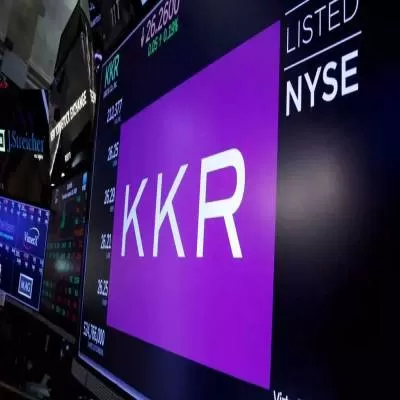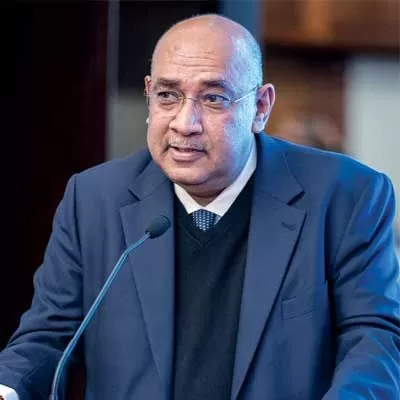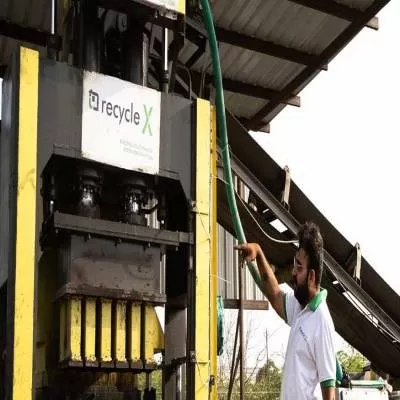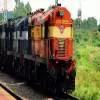- Home
- Infrastructure Urban
- ECONOMY & POLICY
- Rewriting the Rules

Rewriting the Rules
Digital technologies are transforming the construction industry, bringing in benefits across the board, asserts <span style="font-weight: bold;">SN SUBRAHMANYAN. </span> <p></p> <p> With drones rendering surveys quick, easy and accurate, and plant and machinery 'talking' from project sites streaming data on usage and productivity, the construction industry is in the throes of dramatic change with emerging new and frontier technologies rewriting the rules of the game. </p> <p>Long considered an old-world and slowly evolving industry, construction is making rapid strides in the technology space powered by the ubiquitous process of digitalisation. The objective is to harness the power of these new technologies to make significant improvements to the business by increasing productivity, reducing cost and enhancing efficiencies. </p> <p> <span style="font-weight: bold;">Adoption and adaptation</span><br /> Gone are the days of tedious, manual compilation of data from multiple and far-flung project sites and poring over them to squeeze out some intelligence. Today, digital technologies enable data capture in real time and quick transmission for detailed analytics to throw up insights that are available on visually rich and intuitive dashboards. </p> <p>These changes are by no means charged by a fascination for the new and jazzy but driven by cold business imperatives, deployed with a clear understanding that significant benefits will accrue sooner rather than later. </p> <p>While other industries have already zoomed away on the digital highway and are reaping the considerable benefits thereof, the construction industry, by its very nature and character, has been relatively slower on the adoption curve. However, once having tasted initial success, the pace of adoption has become fast and furious, primarily because the areas of digital utilisation in the construction industry are many and diverse: machinery, design and engineering, geographical surveys, materials, logistics, maintenance, field execution, labour workforce, safety, customer relationships, documentation and so on. </p> <p> <span style="font-weight: bold;">Digital geography</span><br /> Geospatial technologies are creating digital geography, making time-consuming and inconclusive surveys quicker and more economical with far less effort, producing accurate data that is continuous without interpolation and good enough for quantity estimations. Data acquired through geospatial technologies like GPS/GNSS, LiDAR, photogrammetry, satellite remote sensing and the like can be manipulated, stored, analysed and presented in any way possible. Assets lying in remote project sites hooked with telematics devices and sensors stream data about hours of usage, geo location, fuel consumption, etc, to arm planners to evolve strategies to improve efficiencies. The use of BIM (building information modelling) has opened a collaborative method of working that allows more efficient methods of designing, delivering and maintaining physical assets throughout the life-cycle. </p> <p> <span style="font-weight: bold;">Labour and employee engagement</span><br /> Digitalisation has the potential to optimise labour, ensuring their safety and improving productivity, which can make a huge impact on the profitability of projects. Finger-printing, developing biometrics of workmen, yoking the power of Jan Dhan bank accounts and Aadhar cards for identity, are path-breaking steps that are being taken in this realm. Once uniquely identified, it is possible to maintain a database of workmen with respect to their skills, qualifications, specialisations, levels of expertise, training attended, record of all the sites they have worked at and the special works they were involved in. With this intelligence, it will be possible to place the right man for the right task at the right place. Productivity will automatically improve. Safety is another area that can be addressed: workmen, wired with RFIDs, can be prevented from venturing into unsafe or 'no-go' zones, while sensors on their equipment and bodies and safety apps will help them stay safe. The aim is to create the 'Connected Workman' fitted with all life-saving sensors, like beacons, altimeters, fatigue and gas detectors. Employee engagement is yet another critical area where digitalisation is beginning to play a key role. Finding new platforms to communicate, share and collaborate are steps in the right direction to create a sharing organisation, which will also be a growing and successful one. </p> <p> <span style="font-weight: bold;">Material management</span><br /> Material management at construction sites has historically been extremely complicated and arduous. One of the quickest and most efficient ways to address this issue is to monitor and track materials on a real-time basis. In the new scenario, digital technology enables every single material arriving at site to carry technology in the form of bar codes, RFID, GPS tracking and/or sensors that will constantly communicate what it is and where it is being stored, along with other specifics. This will sharpen material management processes and create a seamless system that is sure to transform supply chain management.</p> <p> <span style="font-weight: bold;">Error-free construction</span><br /> The increasing use of virtual reality, augmented reality and the hybrid mixed reality are set to make a paradigm shift in construction techniques as the possibility of making design and construction error-free is very much on the horizon. It is possible today with the use of HoloLens to experience a construction virtually, place the design on the construction site and study it to ensure there are no errors and thereby no need for rework. </p><br /> The day when reality and the virtual may actually merge is not too far away! <p></p> <p> <span style="font-weight: bold;">Embracing change</span><br /> All considered, digitalisation ushers in transparency, empowering objective decision-making based on factual online data. At the same time, it is imperative to realise that the true benefit of mastering technology and designing and developing solutions lie in implementation and embracing the resulting changes it will bring. Many digital solutions will provide information and insights that will be available either as a real-time feed, alerts, analytics, trends, patterns or even statistical measures that point to possibilities. The onus is then on managers and executives to comprehend this data and act on them. This calls for a fresh outlook, a new mindset, a reorientation, precisely why embracing digitalisation has a lot to do with change management.</p> <p>Indeed, the challenges in the area of digitalisation for the construction industry are many, the technologies still nascent, the emerging ecosystems new and challenging, but the opportunities are many for those who are willing to change. And those who are able to make this change quicker and more efficiently stand to gain immeasurably.</p> <p> <span style="font-weight: bold;">About the author: <br /> SN Subrahmanyan, CEO and Managing Director, Larsen & Toubro</span>, additionally heads L&T Construction (erstwhile ECC), is Vice Chairman on the Boards of L&T Infotech (LTI) and L&T Technology Services and Non-Executive Chairman of L&T Metro Rail (Hyderabad). He is also responsible for the Metallurgical & Material Handling (MMH) and Shipbuilding business verticals.</p>
























